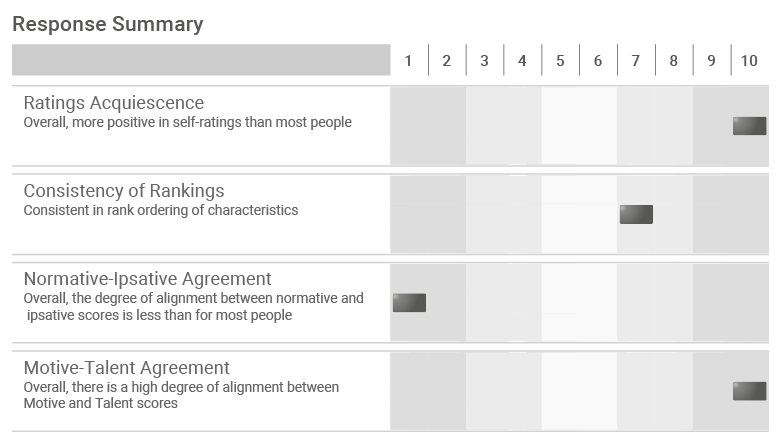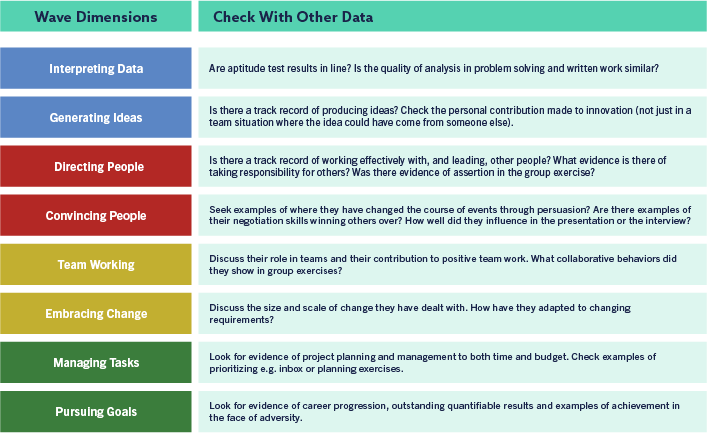Article · 5 minute read
By Richard Williams – 25th April 2024
When it comes to implementing a fair, scientific and effective approach to hiring, CVs have always been problematic:
This doesn’t mean CVs and online applications forms should be ditched completely, but it is more important than ever for them to be used in parallel with a robust, objective and scientific solution.
At Saville Assessment, we partner with clients to help reduce the risks associated with hiring, and help ensure the right people are identified for the right roles. The science behind our Wave® personality questionnaireshelps reduce the odds of a bad hire from 1 in 5 to 1 in 50.
In this short article, we highlight some of the unique Wave features which help you spot potential red flags in a candidate profile and tips for preventing candidate faking.
Our flagship assessment Wave, the most scientifically-proven predictor of work performance and potential, includes some unique scoring aspects and powerful safeguards to prevent and control distortion. The first place to look for insight into how an individual has responded is the Response Summary.
In this section, very high scores on acquiescence can be accompanied by good or reasonable consistency (see below). High acquiescence with consistency can be linked to strong performance in the workplace and should also be associated with a track record of achievement and progress.

In selection scenarios, high acquiescence and the associated splits on the profile should be considered as areas for further exploration. Cross-referencing these areas is essential. Conversely, very low acquiescence can be a sign of self-criticism or a lack of motivation to complete.
Low consistency is a warning, but it is not an indication of faking as such. Users need to explore this further before coming to conclusions.
Where acquiescence is high or low, we tend to see lower normative-ipsative agreement in the response summary and we can then hone in on potential areas of distortion or mistruth with the normative-ipsative splits (more on these below) in the individual’s profile itself.
For each area of the Wave report, there is a rating score (normative) on a nine-point scale and a score based on the ranked data (ipsative). Normative-Ipsative (N-I) splits occur when there is a difference of three or more Stens between the two scores on the same dimension, and these are flagged for further investigation.
If an individual is ‘faking good’, or overplaying their capabilities, this is likely to be illustrated by a number of splits where the normative (N) scores are higher than the ipsative (I). These dimensions need further probing at interview to see whether the individual can provide evidence and examples to back up their profile.
On the flip side, where there is low acquiescence and splits where the I is higher than the N, the individual may be being self-depreciating or in some exceptional circumstances even ‘faking bad’. A large number of splits by five Stens or more should be considered a red flag and should raise questions for those interpreting the report, and require further exploration.
The Wave profile also looks at an individual’s motives and talent; in simple terms, how much they enjoy doing something compared with how good they are at it. The average number of Motive-Talent splits (where there’s a mismatch between these two aspects) you’d expect to see on a Wave profile is four. Where there are more, this this could be an indication of someone whose career has plateaued or is in the wrong role, but it could also be a clue towards non-genuine responses, especially when combined with a large number of normative-ipsative splits.
We also encourage cross-referencing the data generated by Wave.
Some examples of what to look out for are given below (in line with the different dimensions of Wave):

If you have any questions, or would like to talk to one of our expert consultants about how you can harness the incredible assessment power of Wave®, click below to get in touch.
© 2025 Saville Assessment. All rights reserved.